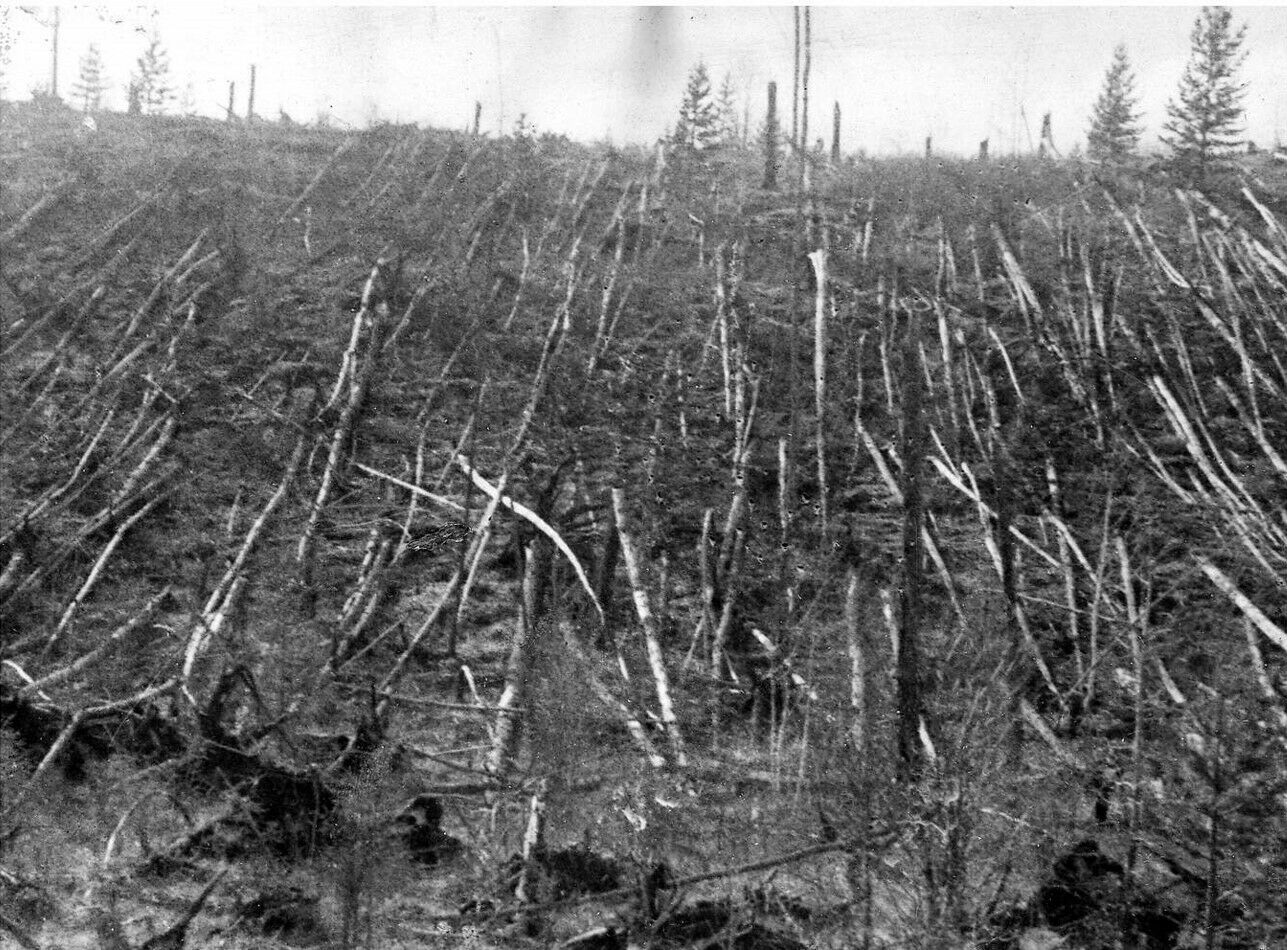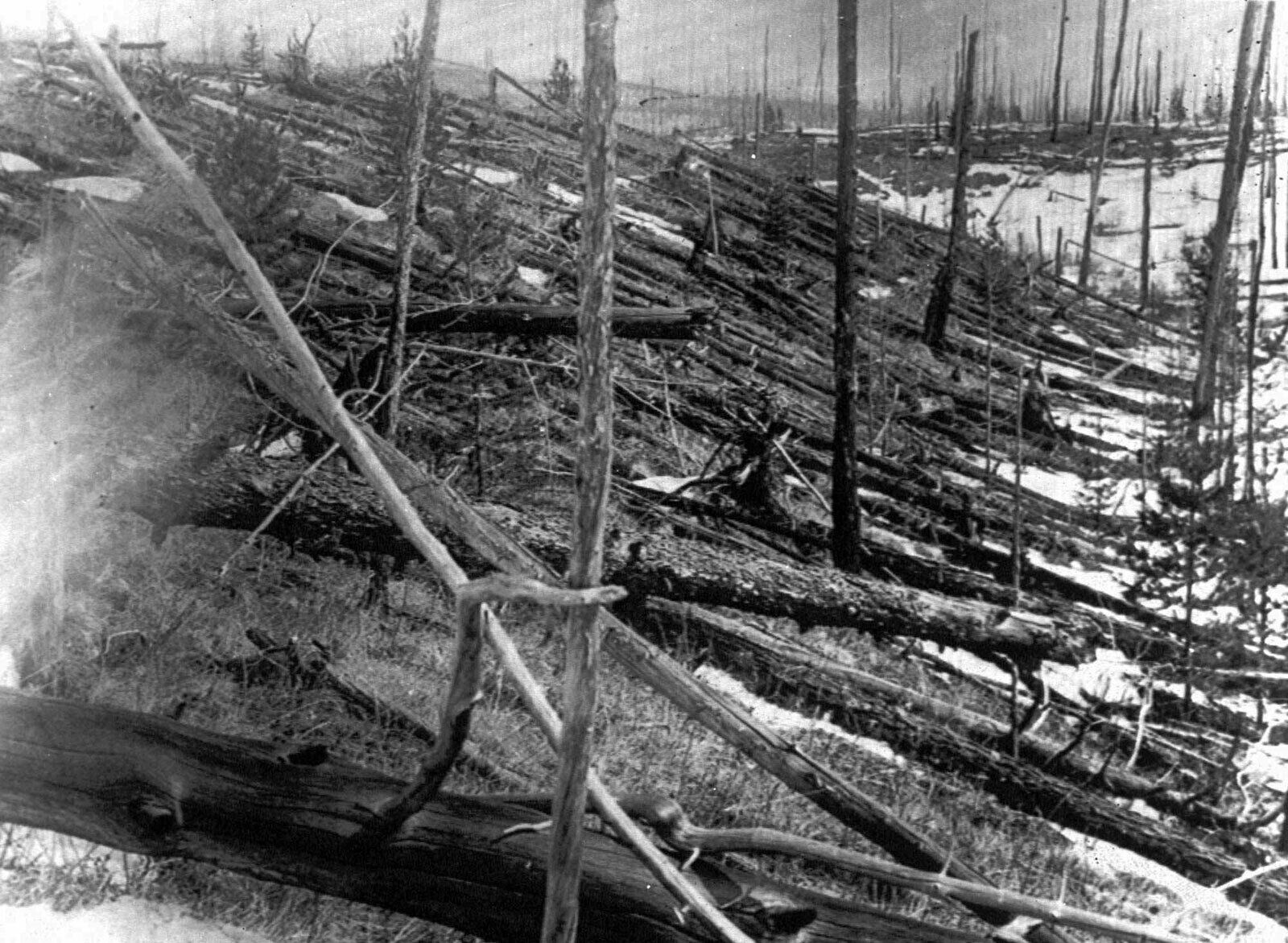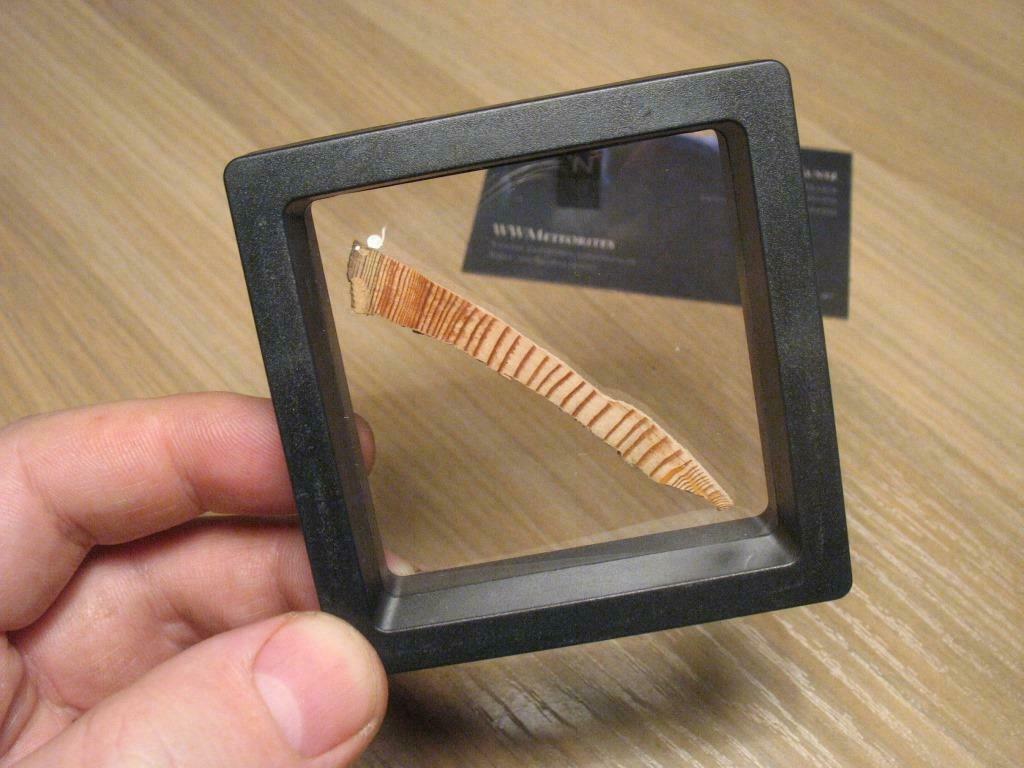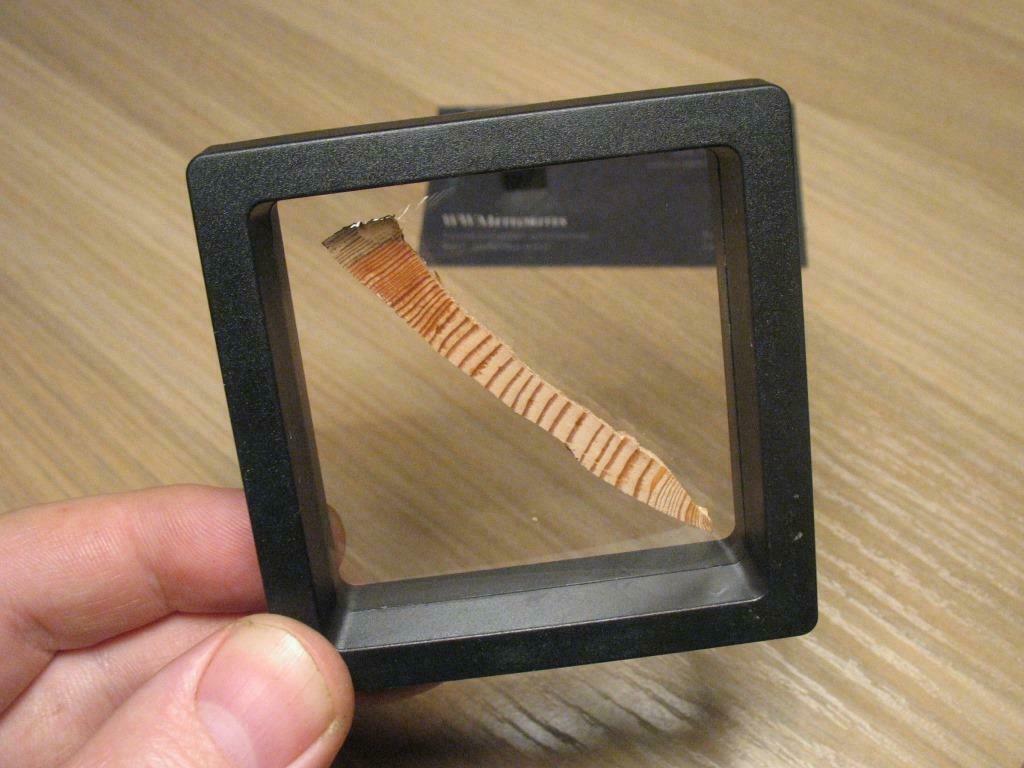Image Gallery






Tunguska event on 30th of June, 1908 is classified as an Impact Event. This is Section of wood at blast zone. This section come from specimen collected by scientists of Bologna University, then obtained by Giorgio Tomerelli... Specimen presented in a 7x7xm mebrane box.
"During the 1990s, Italian researchers, coordinated by the physicist Giuseppe Longo from University of Bologna, extracted resin from the core of the trees in the area of impact to examine trapped particles that were present during the 1908 event. They found high levels of material commonly found in rocky asteroids and rarely found in comets..."
See : Longo, G.; Serra, R.; Cecchini, S.; Galli, M. (1994). "Search for microremnants of the Tunguska Cosmic Body". Planetary and Space Science. 42 (2): 163–177
The Tunguska event was a large explosion that occurred near the Podkamennaya Tunguska River in Yeniseysk Governorate (now Krasnoyarsk Krai), Russia, on the morning of 30 June 1908.The explosion over the sparsely populated Eastern Siberian Taiga flattened 2,000 square kilometres of forest, and may have caused up to three human casualties. The explosion is generally attributed to the air burst of a meteoroid. It is classified as an impact event, even though no impact crater has been found; the object is thought to have disintegrated at an altitude of 5 to 10 kilometres rather than to have hit the surface of the Earth.
Early estimates of the energy of the air burst ranged from 10–15 megatons of TNT to 30 megatons of TNT, depending on the exact height of burst estimated when the scaling laws from the effects of nuclear weapons are employed. A 2019 paper suggests the explosive power may have been around 20–30 megatons.